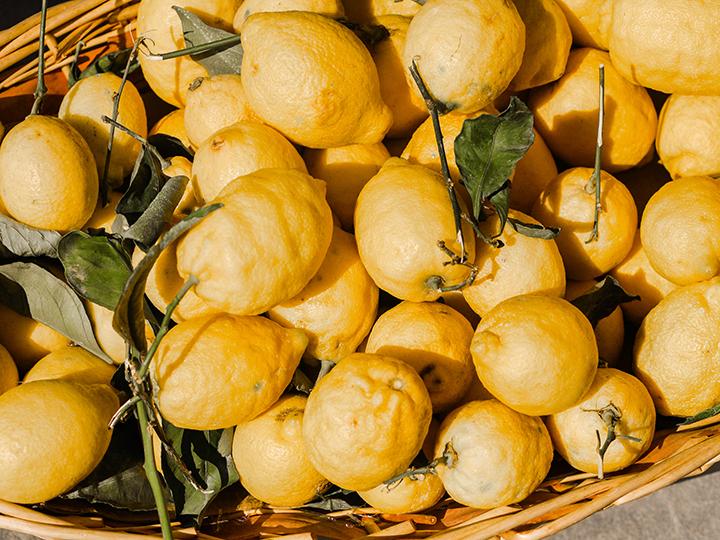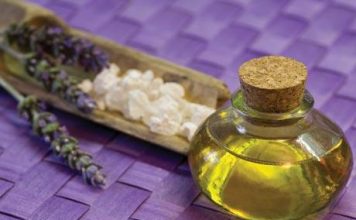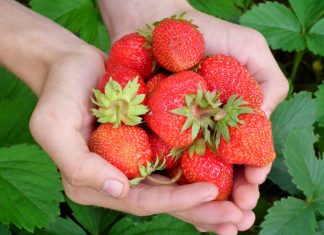| Issue #100 • July/August, 2006 |
The clean, pure lemon has gotten a bad rap. It has become a metaphor for getting a dud. But the lowly lemon is probably one of the most versatile fruits in the world. A single lemon seems to capture a ray of sunshine in its glorious skin. This ancient fruit is likened to two fruits in one package, as both the zesty rind and flavorful juice can be used for different purposes. Right-hand friend to celebrated chefs and old-fashioned cooks, lemons are indispensable in a number of dishes, from salads to desserts.

We’ve long known that lemons are packed with vitamin C and were transported by sailors on long journeys during the 18th century to ward off scurvy (vitamin C deficiency), a condition known to make their teeth fall out. Lemons have also been a standard method of flavoring foods without the addition of salt or fat. But did you know that lemons are packed with phytochemicals, plant compounds that fight heart disease and cancer?
Lemons have numerous anti-cancer properties
Lemons contain unique flavonoids, a class of phytochemicals that have antioxidant and anti-cancer properties. Liminoids, flavonoids found abundantly in lemons and citrus fruits, are compounds that impart bitterness in citrus juices and have been shown to reduce the risk of several types of cancer. And eating fresh citrus, including lemons, is one of the best ways to ward off illness and prevent disease, according to studies. Lemons are also high in fiber and beta carotenes, yet they contain no fat and a mere 15 calories. Lemons are high in vitamin C, which has been known to boost the immune system, protect against heart disease, combat cancer, and fight infection. Vitamin C is also one of the main antioxidants found in food and it travels through the body neutralizing damaging free radicals.
|
Lemons are also versatile flavor-enhancers, as they reduce the need for salt and fat in cooking and work as an anti-browning agent for fruits and vegetables. Unlike many fruits, lemon is a flavor on its own. Lemons can be the star of the show, as in Moroccan lemon chicken, or they can support a great dish with a small splash. Lemons can add just the right balance to a recipe by neutralizing overt flavors. Something missing in your potato salad? Try a spoonful of fresh lemon juice.
You can find lemons available year round, but your local grocery store may only stock one or two varieties. A plethora of lemons are grown across the world. Chefs have been known to value their own favorite lemon for use in their culinary strongholds.
Handy lemony tips for your kitchen
- Keep a bowl of lemons in the kitchen. Cheaper than a flower arrangement, a cache of lemons may encourage you to squeeze one into your salad dressing, over your fish, or into your marinade at a moment’s notice. Added bonus: They add a fresh, clean aroma to your kitchen.
- Before squeezing lemons for juice, keep the lemons at room temperature and roll them on the countertop to release the juices.
- Add slices of lemon to your drinking water.
- Keep a mix of olive oil, fresh herbs, garlic, and lemon juice on hand for use in salad dressings, marinades, and as a dip for bread.
- Toss your used lemon rinds into the garbage disposal in order to freshen it.
- Squeeze lemon juice over sliced fruits that brown, such as apples, pears, and bananas.
- Grate lemon peel into your favorite batch of cookies, bread, muffins, or cake to add a citrusy flavor.
- Brighten the color of vegetables by squeezing lemon juice over them before they are cooked.
- Tenderize meats with lemon juice.
- Add lemon juice to rice while cooking to make it fluffier.
- Jazz up the flavor of other fresh fruits with lemon zest.
- Add julienne strips of lemon peel to stir fries and pasta dishes.
- Add lemon juice to dips, from salsa to hummus.
- Zip up the flavor of almost any pasta, potato, chicken, tuna, or egg salad with lemon juice.
- Squeeze lemon juice into your favorite soup recipe.
- Don’t even think about serving seafood without plenty of lemon wedges.
- Try lemon juice or grated lemon peel in your risotto.
- Blend lemon juice into yogurt for a healthy fruit salad dressing.
- Keep a pitcher of fresh lemonade in your refrigerator for a refreshing beverage.
Remember, when life gives you lemonsgrate, squeeze, grind, and slice them up to add zest to your foods and life.
Parsley salad, lemon vinaigrette
1 shallot, minced
1 tsp. finely grated lemon zest
2 Tbsp. Lemon Vinegar or seasoned rice vinegar
1 garlic clove, minced
½ tsp. Dijon mustard
¼ tsp. salt
pinch of freshly ground black
pepper
¼ cup Lemon Olive Oil or olive oil
6 cups loosely packed fresh flat-leaf parsley leaves (about 2 bunches)
6 cups loosely packed fresh curly parsley leaves (about 2 bunches)
Whisk together the shallot, zest, vinegar, garlic, mustard, salt, and pepper in a small bowl. Whisking constantly, slowly add the lemon oil in a thin stream, and whisk until the vinaigrette is emulsified.
Just before serving, toss the parsley with the dressing in a large bowl, arrange on a chilled serving platter or salad plates, and serve immediately. Serves 6 to 8.
Lemon scallop ceviche
1 pound tiny bay scallops
1 sweet red onion, finely diced
1 yellow bell pepper, seeded and finely diced
zest of 1 lemon, removed with a vegetable peeler
1 cup fresh lemon juice (about 4 large lemons)
1 cup loosely packed cilantro leaves
3 Tbsp. Lemon Olive Oil or olive oil
1 to 3 jalapeno chilies, seeded and minced
1 to 2 garlic cloves, mashed to a paste with ½ tsp. salt
¼ tsp. ground coriander
radicchio leaves for serving, optional
Stir together all of the ingredients except the radicchio in a large bowl. Refrigerate, covered, for at least 4 hours, or until the scallops are opaque throughout and firm, or up to 24 hours.
Just before serving, taste and add more salt, if necessary. Serve the ceviche chilled on radicchio leaves, if desired. Serves 4 to 6.
Peaches and berries with rose water and lemon
1/3 cup sugar
4 strips lemon zest, removed with a vegetable peeler
1 Tbsp. fresh lemon juice
pinch of salt
4 firm ripe peaches, peeled and sliced
1 or 2 tsp. rose water (or orange flower water)
¼ tsp. pure vanilla extract
1 cup mixed fresh ripe berries

Bring 1 cup cool water, the sugar, zest, lemon juice, and salt to a boil in a small saucepan over high heat. Remove the pan from the heat and let stand for 2 minutes. Add the peaches and let stand for 10 minutes. Add the rose water to taste and the vanilla. Let the mixture come to room temperature.
Stir in the berries. Chill, covered, for at least 1 hour and up to 4 hours before serving. Serves 4.
Lemon vinegar
1 cup seasoned rice vinegar
2 Tbsp. finely grated lemon zest
Place the vinegar and the zest in a glass jar. Let stand at room temperature for at least 1 week, shaking occasionally.
Pour the vinegar through a strainer and discard the zest. Transfer to a jar and store, tightly covered, at room temperature. Makes 1 cup.
Lemon oil
1 cup extra virgin olive oil, olive oil, grapeseed oil, or other vegetable oil
2 Tbsp. finely grated lemon zest
Place the oil and the zest in a glass jar. Let stand at room temperature for at least 2 weeks, shaking occasionally.
Pour the oil through a strainer and discard the zest. Transfer to a jar and store, tightly covered, at room temperature. Makes 1 cup.
NOTE: Recipes are compliments of Lori Longbotham, author of Lemon Zest and Luscious Lemon Desserts.
(Sharon Palmer is a registered dietitian and freelance food and nutrition journalist in Southern California.)














